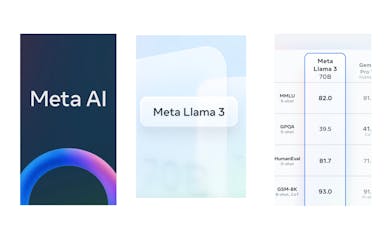'The Rule Book Was Thrown Out': How Girls' Night In Built a Product in 7 Days

"We first talked about the idea as a team last Wednesday, and it launched today. That means we had seven total working days from concept to launch."
Girls’ Night In was founded on the premise of staying at home. The brand started in 2017 as a newsletter geared towards women that focuses on meaningful ways to relax, recharge and cultivate community during nights in. When it first launched, Girls’ Night In had about 150 subscribers. Today, there are 160,000.
Girls’ Night In’s core product is still rooted in editorial, and the company’s mission is more applicable than ever as people are now sequestered at home in the wake of COVID-19. In response to the growing outbreak, the company decided to quickly put together a new product; a resource-packed site (dubbed “Stay Home, Take Care”) that doesn’t prescribe one way of processing the global pandemic, but instead offers multiple ways of coping (comfort, entertainment, action, distraction, etc.) based on what you, personally, need. In tandem with launching the new site, Girls’ Night In will donate up to $1,500 to World Central Kitchen and Crisis Text Line, two organizations on the frontlines of COVID-19.
Product Hunt spoke with Girls’ Night In founder Alisha Ramos about building an entirely new product in seven days, why content came before design and how brands should handle messaging right now.
Since you built this site in response to COVID-19, what did the decision-making process look like? When did you decide you wanted to build this and what were the first steps you took to get it done?
This site came together very quickly. We first talked about the idea as a team last Wednesday, and it launched today. That means we had seven total working days from concept to launch. From the beginning, the vision was very clear; to create a hub for all these amazing resources, activities and charitable causes that we were seeing on our own feeds and that were being sent our way. Everyone seems to be searching for "things to do" while staying home, so we wanted to build a go-to destination that could stay fresh and that you could return to daily.
The first thing we needed was a content strategy. I'm a firm believer that content should come first before design. Our team coalesced around the idea of a user experience centered around "intentions." If you go to the website, you'll see that you can navigate by phrases like, "I want to connect with others," or "I want to help others." Once a basic content structure was in place, we got to work on design. I created a basic wireframe of the full experience, and worked with a talented illustrator, Leah Schmidt, to bring the visual design to life. I knew I needed a quick and easy back-end (rather than build from scratch), so we actually went with Webflow to build out the site on the back-end.
Were there any surprising takeaways in building this quickly? What did your team learn along the way in launching a new product while communicating remotely?
I personally learned that jumping on a quick Slack call to talk something out in 5-10 minutes is so much better than going back and forth typing on Slack. So much context can get lost. On a fast-moving project like this, it's important to not be so precious about wondering whether it's ok to call someone up.
How does this compare to products you’ve launched in the past?
This is by far the fastest moving project we've ever worked on. This is also very different in that there is no revenue directly tied to this project. We simply built it because we wanted to, and wished to live out our brand values of care, connection, and empathy.
This is also a project where the rule book was thrown out completely. The *full* team had to be all hands on deck for this, and I give all of them credit for wearing different hats that they aren't used to to get the site live.
How are you handling messaging right now? What advice would you give to other founders and teams who are thinking about putting relief-based products out into the world?
Right now, we're trying to share this product and resource as widely as possible! I'm personally emailing my contacts and partners in our network to see if there might be some opportunities for collaboration.
For founders who are thinking about putting relief-based products out there, I'd first ensure that it's in line with your mission and values. It's absolutely commendable for any founder and company to take this on, but definitely be forewarned that it will take the strength of your full team. You want it to feel like a win-win-win rather than a distraction. For us, it's a win-win-win because it helps to directly serve our audience, give back to two amazing organizations (World Central Kitchen and Crisis Text Line), while hopefully also finding new audiences for us.
The social distancing “care package” you built is chock-full of valuable content. How are you finding content and how do you decide what content is needed right now?
We are all in an internal Slack where we simply share things we're seeing on our Instagram, Twitter, or other social media feeds that could fit within each bucket or category. We decide what content is valuable right now by seeing how well it serves each "intention" that the site is categorized into. It's definitely a delicate balance between putting out a firehose of content vs. carefully curating content that will resonate with our audience. Luckily, our team is extremely good at curation and finding high-quality content, so I'm grateful for that.
As a leader, how are you personally practicing “staying home and taking care”?
How I take care of myself depends from week to week. This weekend, it will be all about rest and relaxation — most importantly, finding screen-free time to relax. Our team's been talking about picking up some DIY craft night kits, like a tie dyeing kit, so I might tap into my creativity and make something tangible.
Comments (3)
Julia Ann
Working At Coupons Agent As Manager
Todd Stratton
Not just me
Rizwan KK
More stories

Kyle Corbitt · How To · 3 min read
What we've learned in 3 days of Llama 3

Aaron O'Leary · Announcements · 2 min read
Introducing Shoutouts

Finn Lobsien · Opinions · 5 min read
Can Devin AI Replace Product Managers?

Aaron O'Leary · News · 2 min read
Meet Nvidia's new localized AI chatbot

Sarah Wright · News · 2 min read
The top 15 AI products from 2023

